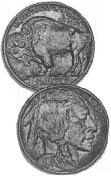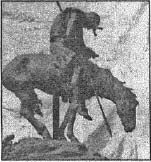
Discover rewarding casino experiences. 
|
What prompted this detour into the Periodic Table? Digging through a box of photos I found a bank full of “silver” coins—half dollars, quarters, dimes, nickels and there was a long Indian Head nickel. What about it enticed me into wondering? Curiosity led me to search and quickly yours truly found that it also was called a Buffalo nickel (not correctly, the bison nickel, but buffalo!) and it was stopped being made in 1938 after about thirty years of circulation and popularity. It was the first U.S. coin to have American icons as its topic, before, they had been noble. Liberty heads or some patriotic theme, like eagles. The element nickel has been in use since prehistoric times when the cave man discovered it in meteoric iron. The silver and copper miners in ancient Saxony were chagrined whenever they came upon nickel because it looked exactly like copper ore and would instead come up nickel. Nickel takes a lot of processing still. The miners, however, named it — kupfernickel, meaning demon (Old Nick) in the copper-kupfer. When A.F. Cronstedt isolated nickel from its ore, he kept the name—nickel, assumedly for sentimental reasons, this in 1851. It is widely used in all kinds of mixtures, alloys, in industry, commerce, construction as well as in silver plating for jewelry and tableware, etc. Coinage in America has actually had few different sorts through its relatively short history, unlike the Chinese or Greek civilizations.
The Indian Head nickel was issued in 1883 to replace the Liberty Head of the same value. The story behind the Indian Head or the Buffalo is interesting and complicated. It isn’t just any old Indian or bison. The artist who designed them as James Earl Fraser, an “all-American-boy-type” who was deeply sensitive about the passing chapters of history, nation’s culture. His father was a mechanical engineer who traveled the upper Midwest constructing bridges and railroads. The family lived longest in South Dakota where James Earl became entranced with the Indians who lived nearby. While still in his teens, he designed the most famous sculpture of his time, “The End of the Trail” (here). Framed photos of it hung in thousands of homes by the turn-of-the century (along with the wild-eyed horses’ heads painted by Rosa Bonheur!). It was such an excellent piece of sculptor that it drew the attention of the preminent sculptor, Augustus Saint-Gaudens who had him come study with him in France and the United States. “The End of the Trail” depicted an exhausted horse and Indian looking as if in deep despair, thirsting and hungering for the pride and position they had once had. Its sensitivity was impressive. Saint Gaudens saw a future for Fraser.
President Theodore Roosevelt had requested Saint-Gaudens to design a new coin the result being “Standing Liberty,” a twenty dollar gold piece which coin collectors consider the most beautiful coin America ever produced. Because of his work with the government mint, the pupil, Fraser, decided to also try to design a like work. Some months passed with problems and hitches along the way but eventually the sketches were accepted and Fraser went forward with the Indian Head/Buffalo nickel. Fraser was only in his mid-thirties when the design was approved and his idea was a totally new one—using the disappearing icon, the Indian and the buffalo as subjects. Growing up as he did amongst them he wanted them to be remembered. And permanently so on a coin. When it was issued in March of 1913 it won public approval to a high degree. Source claims, so says the Old Farmer’s Almanac, Robert Thomas, editor, that almost immediately, too, the public wanted to know the identity of the Indian whose profile was seen on the nickel. At first the artist said it was a composite of two or three models but the public wanted true identity. Fraser finally conceded, naming a northern Cheyenne named “Two Moons” who was present at the Battle of Little Bighorn, Custer’s defeat in 1876. Meanwhile, Iron Tail, a Sioux aide to Sitting Bull at the Little Bighorn, was also reported to be a model. Fraser’s wife did say that he was her husband’s favorite. He also had the “nose for the profile!” He traveled for some years with the Wild West Show of Buffalo Bill Cody and received a lot of attention. John Big Tree, an actor in several of John Ford’s silent Western films, claimed in the 1950’s and ‘60’s that he not only posed for the nickel but also for the statue, “The End of the Trail.” However, no where in Fraser’s notes is found reference to him. In the American-way, others laid claim to the title of the celebrity coin poser but no one proved his case for certain. A third Indian, Adoeette, was known to have modeled for the sculptor but whatever reason, Fraser would not say definitely who or what. You’d think that the buffalo (bison) side of the coin could be any anonymous, innocent beast but such was not the case. It wasn’t just any buffalo but one raised in captivity at the Bronx Zoo where Fraser would become highly exasperated because “Black Diamond,” its name, wouldn’t stand quietly for the side-on pose the artist desired. Although that buffalo never roamed, he wouldn’t be still! The bison weighed a ton so there was no arguing with it. Ultimately he grew too old and crotchety for exhibit and was sold to an animal and game dealer and was slaughtered in 1915. His hide was made into a blanket, “Black Diamond Steaks” were a big sale item and his head was mounted. It was said to have been used seventy years later at a coin convention. Hoorah for the American way again. You’d think coinage had anonymous subjects, wouldn’t you? But still argument occurred even before the nickel was struck. Arcade game businessmen cried bitterly about the coin not fitting into their machine’s slots. And, when they were distributed, streetcar and buses’ toll boxes wouldn’t accept the coin either . . . The grassy mound beneath “Black Diamond’s” feet was too tall so the coin wouldn’t stack nor fit the slots, wherever, nor accept them. So widespread were the problems that the Treasury Department had to redesign them by lowering the grassy mound and adding a thin line below it to protect the words “Five Gents” at the bottom because it was being worn away in their being jammed into the slots. Because the mints in Philadelphia, San Francisco and Denver all three struck the nickel and did it twice, there were plenty of collectibles to be had in the numismatic game. Then in 1937 there was a die mishap that resulted in a three-legged buffalo made at the Denver mint. The “D” for that mint and three-legged bison make it worth more than $2,000 to collectors. Another valuable nickel is a 1916 one takenly struck with two “D’s;” it, too, being worth over $2,400 or more. Once in a great while you’ll still find an Indian Head or Buffalo nickel in your change purse. Now you’ll know them by name. They were replaced in 1938 by the profile of President Thomas Jefferson on the obverse (front) and his home, “Monticello” on the reverse. It’s been nearly seventy-five years since we’ve had another design. Are we due for a change in portrait soon? Can’t remember. In 1951 James Earl Fraser, sculptor and coin artist, was present with two prestigious medals, the National Institute Arts and Letters award and the American Academy of Arts and Letters honors. He is to be noted for his turning around the subject matter of the American coin in using two truly American symbols. James Earl Fraser died in 1953 at age seventy-seven, part of the background that make till now a prosaic object come alive.
|





